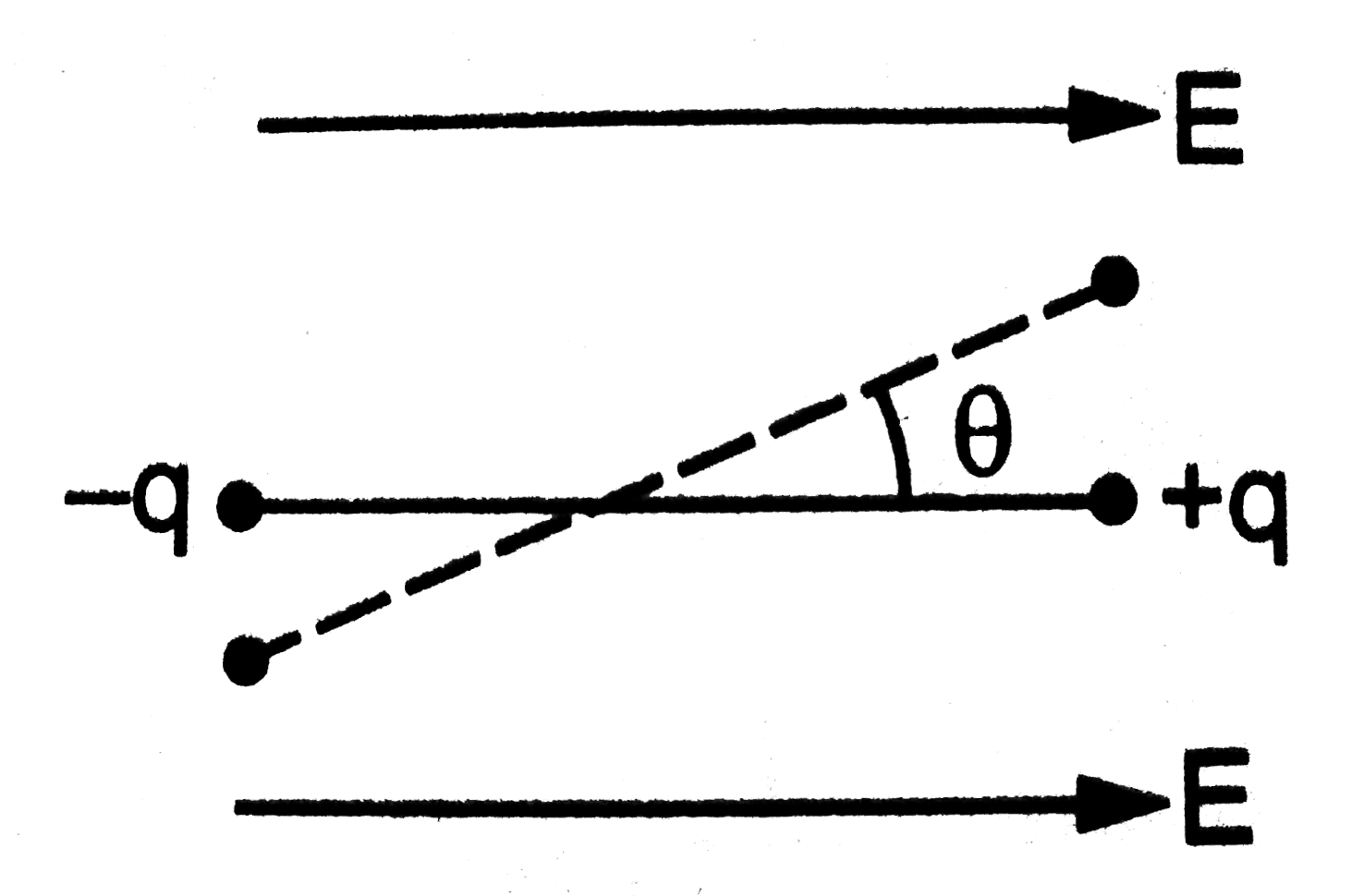An electric dipole is formed due to two particles fixed at the ends of a light rigid rod of length 1. The mass of each particle is m and charges are −qand+q The system is suspended by a torsionless thread in an electric filed of intensity E such that the dipole axis is parallel to the filed if it is slightly displaced, the period of angular motion is
12π√2qEmI
2π√mIqE
2π√mI2qE
12π√mI4qE
The correct Answer is:C
Similar Questions
show an electric dipole formed by two
. particles fixed at the ends of a light rod of length l. The
. mass of each particle is m and the charges are -q and
. +q . The system is placed in such a way that the dipole
. axis is parallel to a uniform electric field E that exist
. in the region. The dipole is slightly rotated abut its
. centre and released. Show that for small angular
. displacement, the motion is anguler simple harmonic
. and find its time period.

View Solutionshow an electric dipole formed by two
. particles fixed at the ends of a light rod of length l. The
. mass of each particle is m and the charges are -q and
. +q . The system is placed in such a way that the dipole
. axis is parallel to a uniform electric field E that exist
. in the region. The dipole is slightly rotated abut its
. centre and released. Show that for small angular
. desplacement, the motin is anguler sumple harmonic
. and find its time period.

View Solution
Knowledge Check
An electric dipole is formed two particles fixed at the ends of a light rad of length I. The mass of each particle is m and charges are −q and +qThe system is suspended by a torsionless thread in an electric field of intensity E that the dipole axis is parallel to the field if it is slightly displaced the period of angular motion is
A12π√2qEmlB2π√2mlqEC2π√ml2qED12π√ml4qEDue to an electric dipole shown in fig., the electric field intensity is parallel to dipole axis :
 Aat P onlyBat Q onlyCboth at P and at QDneither at P nor at Q
Aat P onlyBat Q onlyCboth at P and at QDneither at P nor at QElectric field intensity (E) due to an electric dipole varies with distance (r) from the point of the center of dipole as :
AE∝1rBE∝1r4CE∝1r2DE∝1r3
Due to an electric dipole shown in fig., the electric field intensity is parallel to dipole axis :

View SolutionThe potential energy of an electric dipole in a uniform electric filed is U .The magnitude of the torque acting on the dipole due to the field is N .Then
View SolutionElectric field intensity (E) due to an electric dipole varies with distance (r ) from the point of the center of dipole as :
View SolutionElectric field intensity (E) due to an electric dipole varies with distance (r) of the point from the center of dipole as :
View SolutionElectric field intensity (E) due to an electric dipole varies with distance (r ) from the point of the center of dipole as :
View Solution
